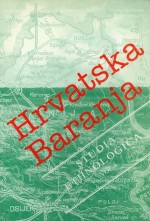Baranja, povjesno-geografski pregled
Baranja, Historical-Geographical Review
Author(s): Mladen KlemenčićSubject(s): Historical Geography, Political history, Recent History (1900 till today), Cultural Anthropology / Ethnology, Demography and human biology
Published by: Sveučilište u Zagrebu, Filozofski fakultet
Keywords: Baranja; Croatian-Hungarian border; history of the 20th century; historical geography review; Serbian occupation;
Summary/Abstract: Baranja is borderland of Croatia situated between the Danube and the Drava rivers and Croatia-Hungary boundary. The region is rich in natural resources for agriculture and always has had important position on comunicational directions. Therefore Baranja has always been attractive area population. Up to 16th century populations had been influenced by rather frequent migrations: of Illirs, Huns, Avarians, Croats and Hungarians. In the post-Ottoman period the new migrations led to a very heterogeneous ethnically compositions. The region was populated by the Croats, Hungarians, Germans and Serbs. Such an ethnic composition remained until present-day, except that Germans after world War II were forced by the communist regime to leave. Although after 1945 the Croats were the most numerous among population of region, Baranja was claimed by Serbia. Due to that in 1991 Yugoslav (Serbian) Army occupied Baranja and after that almost all the Croats and Hungarians were expelled from region.
Journal: Studia ethnologica Croatica
- Issue Year: 1992
- Issue No: 4
- Page Range: 15-21
- Page Count: 7
- Language: Croatian

